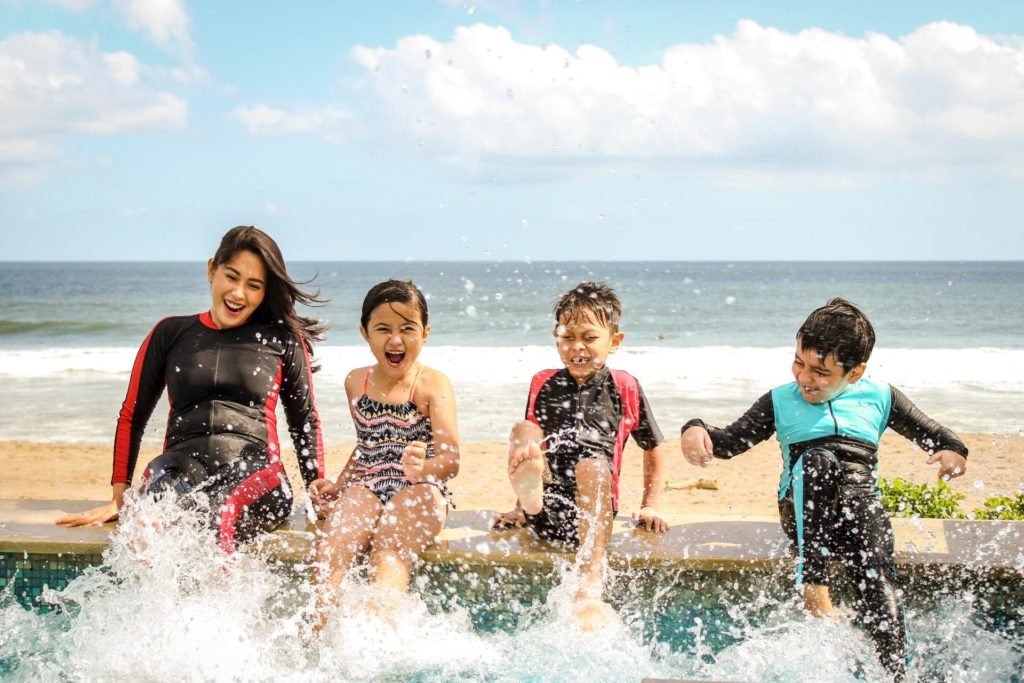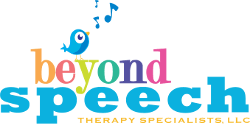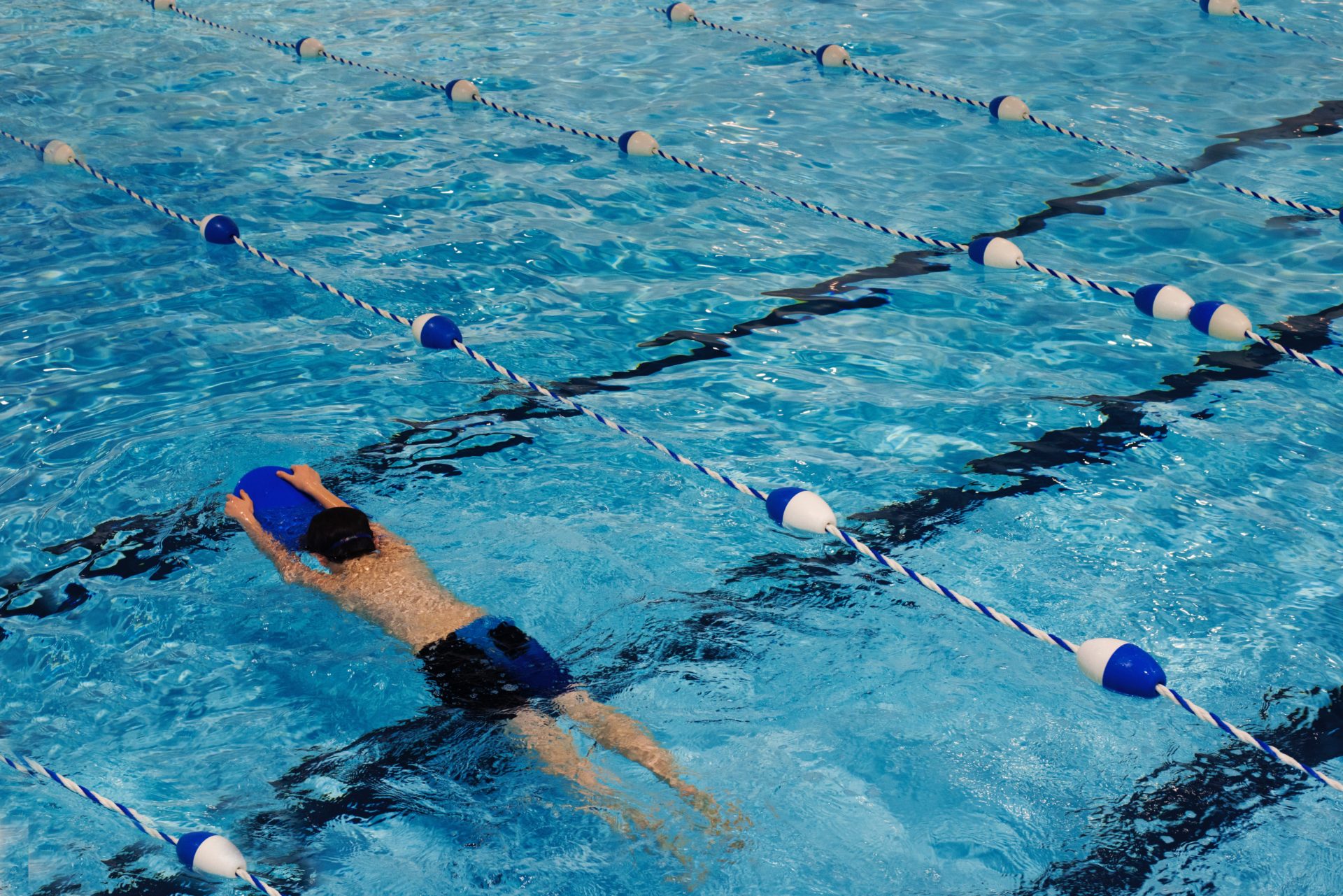What’s more perfect in the summer months than jumping into a perfectly cool pool on a hot day?! Swimming is not only a fun and refreshing activity, but it also provides numerous physical and cognitive benefits for our kids.
As experts in pediatric therapy, we at Beyond Speech understand the importance of gross motor skills in a child’s overall development. We’re exploring the connection between strong gross motor skills and swimming proficiency.
One of our favorite ways to work on important development skills is to play with a purpose! When kids engage in their everyday play they are working on skills without even knowing it. So if you can help direct and engage them in activities that do just that, they won’t even realize they’re getting stronger and building skills because they’ll be having too much fun!
We’ve got a comprehensive look at which specific gross motor skills contribute to becoming a great swimmer and tips on how you can help your child develop them.

1. Core Strength and Stability
Core strength and stability are crucial for your child to become a strong swimmer.
A strong core helps maintain proper body alignment and balance in the water. Engaging in activities that promote core strength – gymnastics, yoga, or tummy time exercises – can contribute to better swimming skills.
Encourage your child to practice activities that engage their core muscles and their swimming skills will get stronger too!
2. Upper Body Strength
Swimming requires significant upper body strength to move through the water.
Strong arms, shoulders, and back muscles help with arm strokes, pulling movements, and overall propulsion. Activities like climbing, monkey bars, and push-ups can strengthen these muscle groups.
Find fun, play-with-a-purpose ways for your child to build that upper body strength as they move through their day.
3. Coordination and Bilateral Integration
Swimming involves synchronized movements of both arms and legs, requiring coordination and bilateral integration.
Activities that work on coordination, such as riding a bike, jumping rope, or playing catch, can improve your child’s ability to perform swimming strokes effectively.
Any activities that develop that coordination will be a great help in the pool!
4. Balance and Proprioception
Maintaining balance and a sense of body position in the water (proprioception) is essential for your child to be able to swim efficiently.
Activities that enhance balance, such as balancing on one leg, walking on a balance beam, or practicing yoga poses, can improve your child’s proprioception and overall balance. These skills translate directly to swimming, as they enable better body control and stability in the water.
5. Body Awareness and Spatial Orientation
Developing body awareness and spatial orientation skills is not only important for swimming but a large piece of a child’s overall gross motor development.
Children need to understand how their body moves in relation to the water and be aware of their positioning while in the pool. Activities like dance, gymnastics, or body-awareness exercises can enhance a child’s spatial orientation skills.
6. Endurance and Stamina
To be a strong swimmer, kids need to be able to sustain effort while in the pool or open water.
This endurance and stamina can be built by participating in other cardio activities – running, biking, or playing sports. Regular participation in activities that elevate heart rate and increase aerobic capacity will contribute to better swimming performance.
Tips for Developing Gross Motor Skills for Swimming
- Enroll in swimming lessons: Professional swimming lessons provide structured guidance and instruction to help children develop proper swimming techniques and improve their gross motor skills specific to swimming.
- Incorporate exercises outside of the pool: Integrate dryland exercises that target core strength, upper body strength, coordination, balance, agility, and flexibility into your child’s routine. These exercises can complement their swimming training and enhance their overall swimming abilities.
- Engage in a variety of physical activities: Encourage your child to participate in a range of physical activities that promote gross motor development while also having so much fun!
If you’re looking for more information and resources about gross motor skill development, reach out to us at Beyond Speech! We have therapists ready to help!
Shoot us a message here or call (779) 435-0724
And follow us on Instagram for more therapy info & fun!

